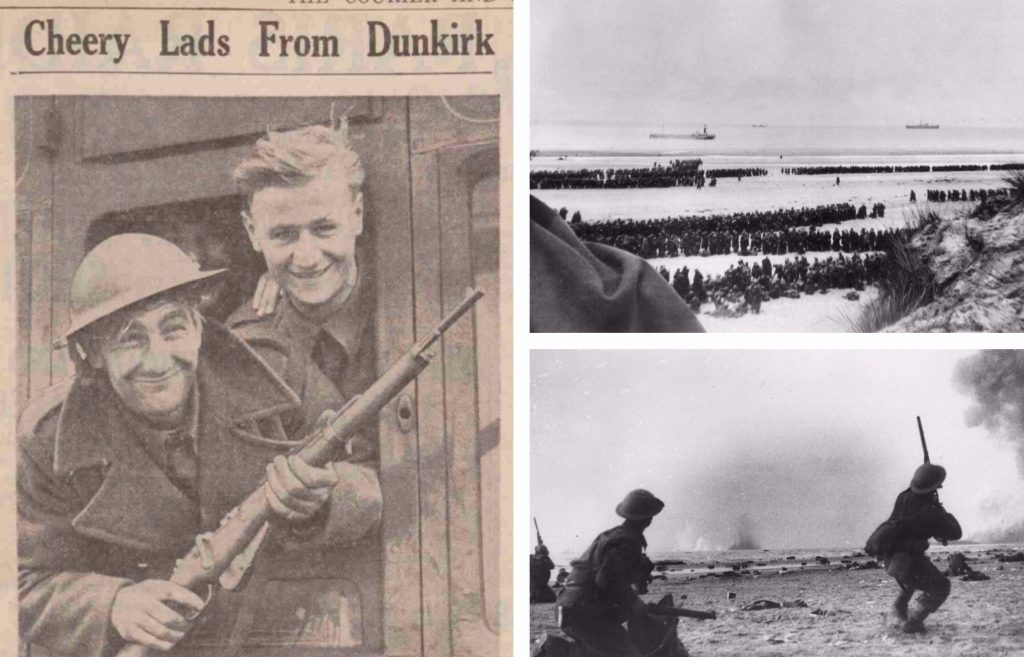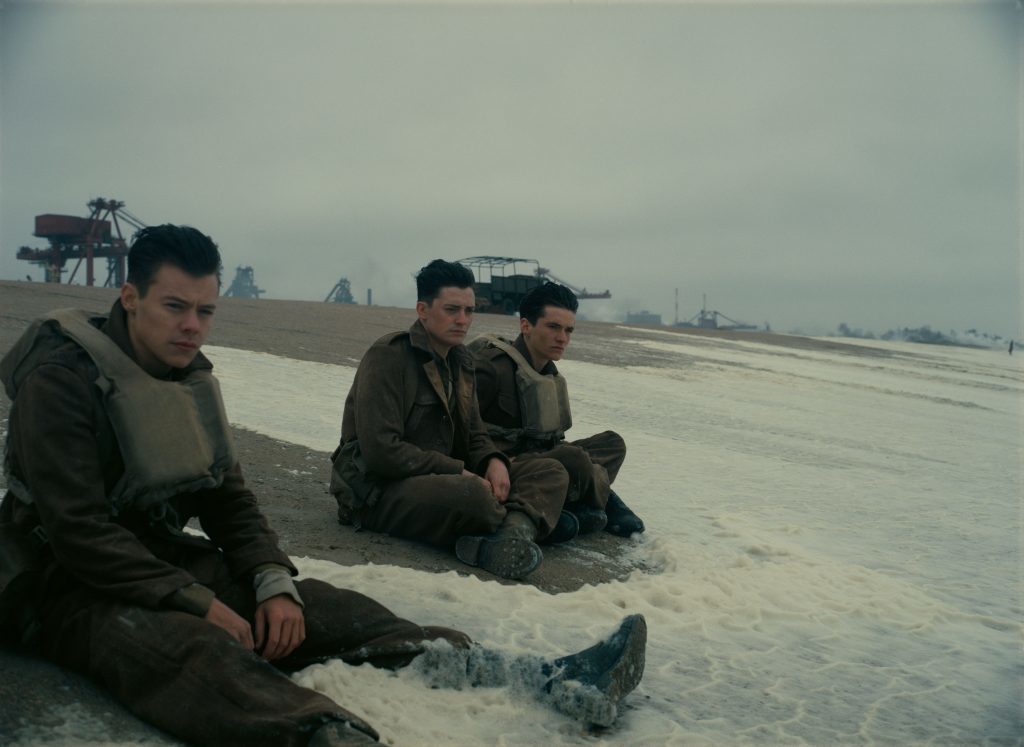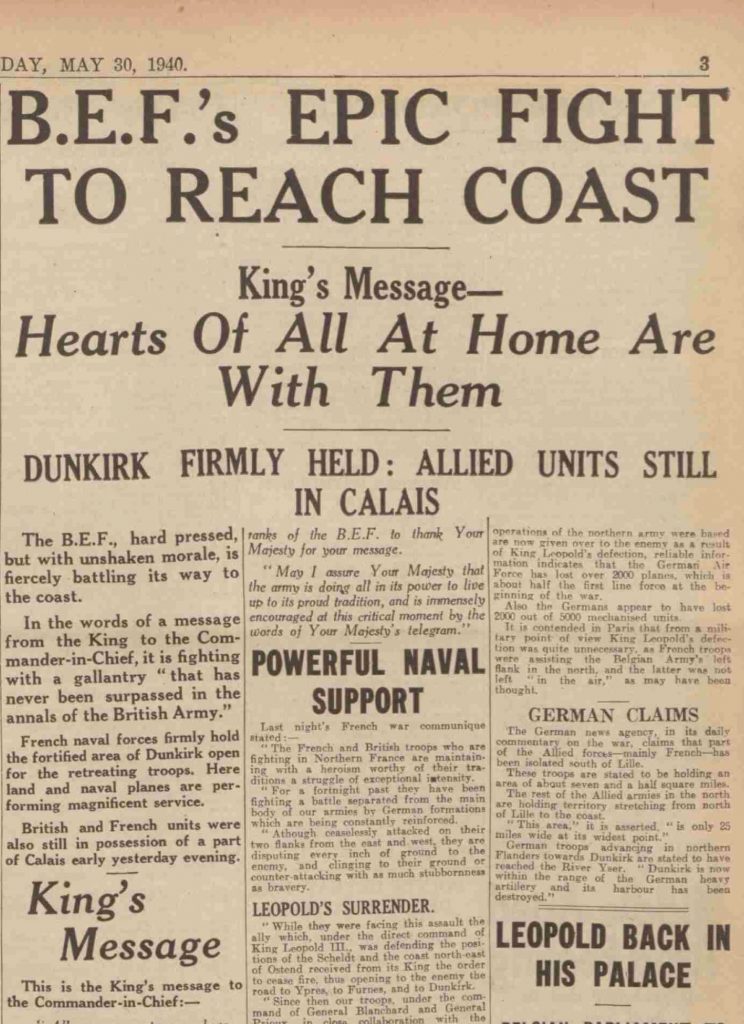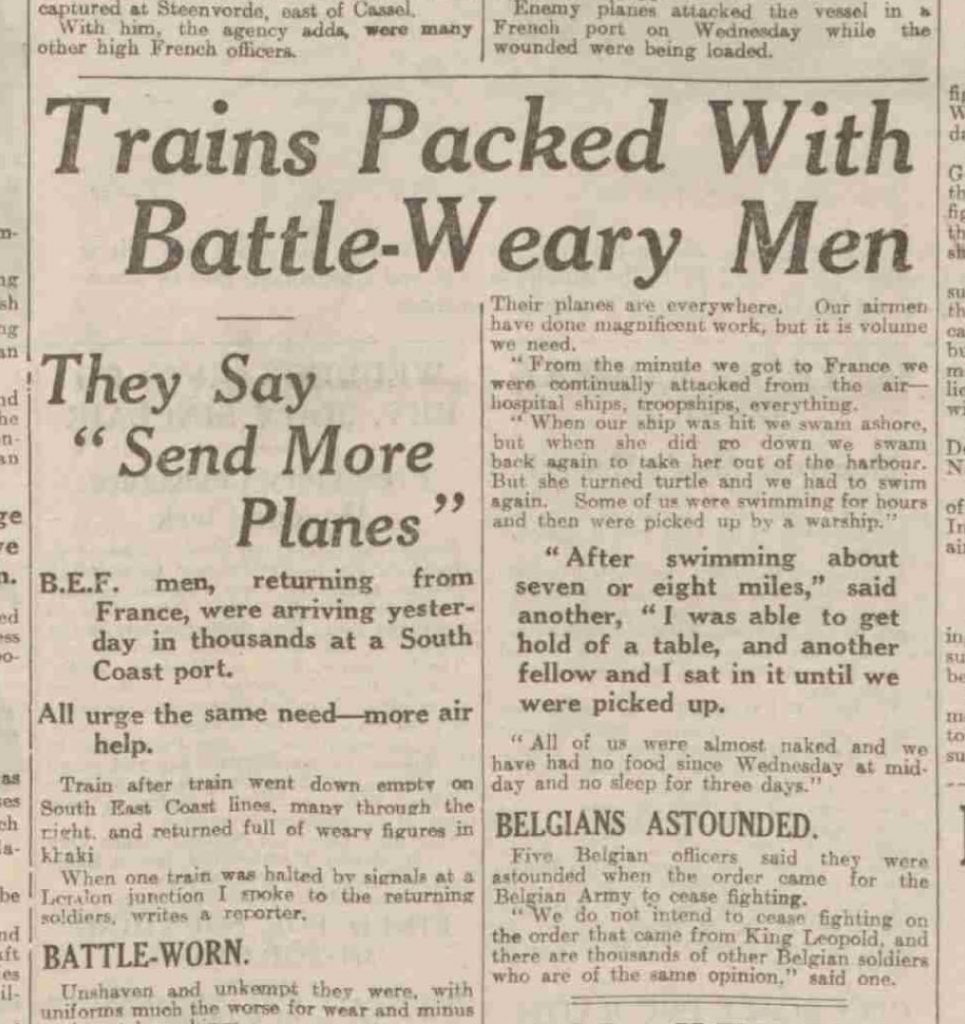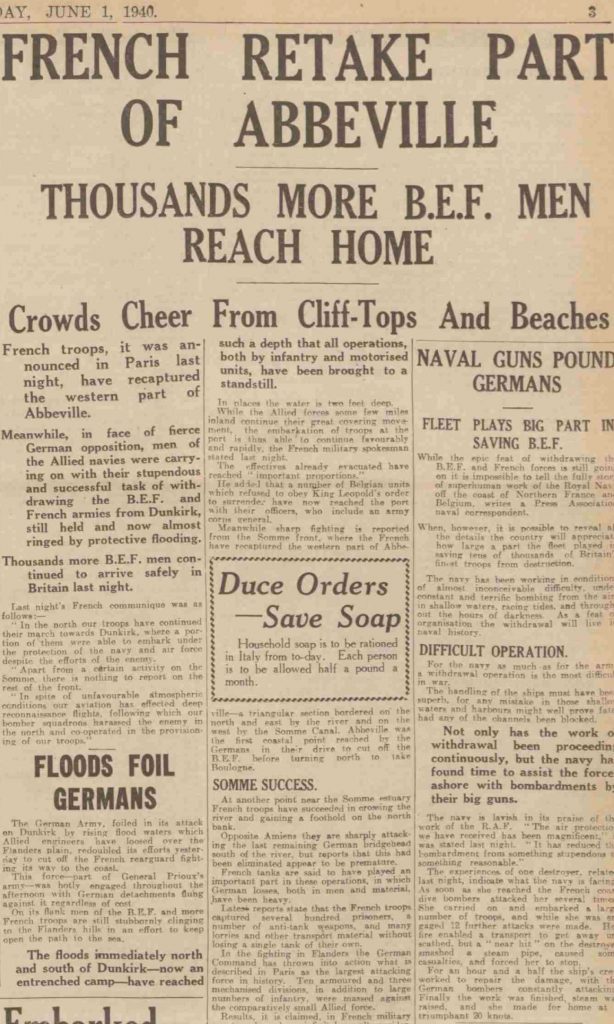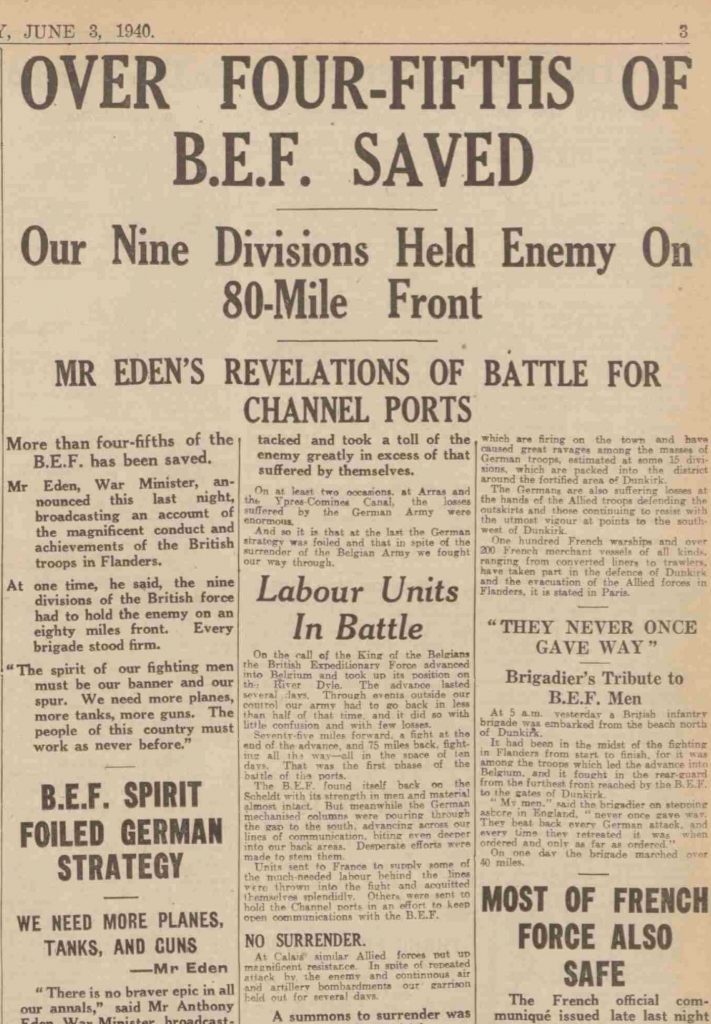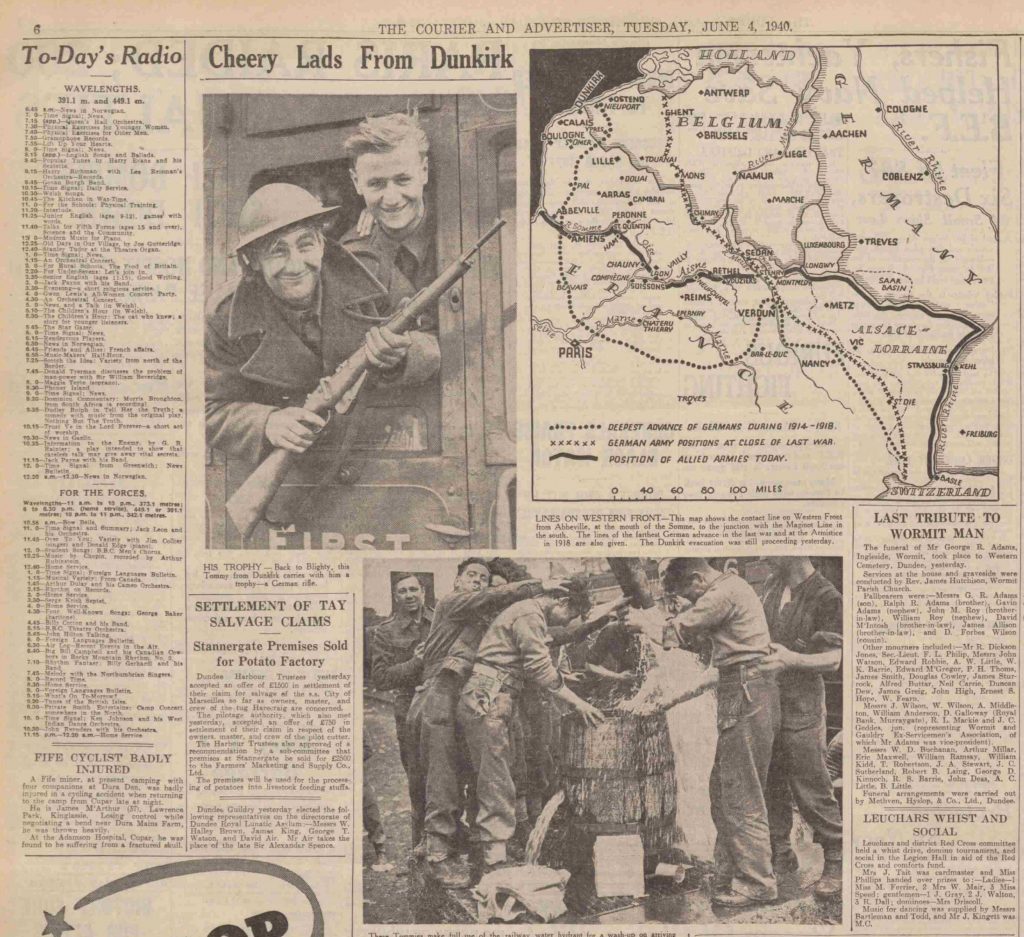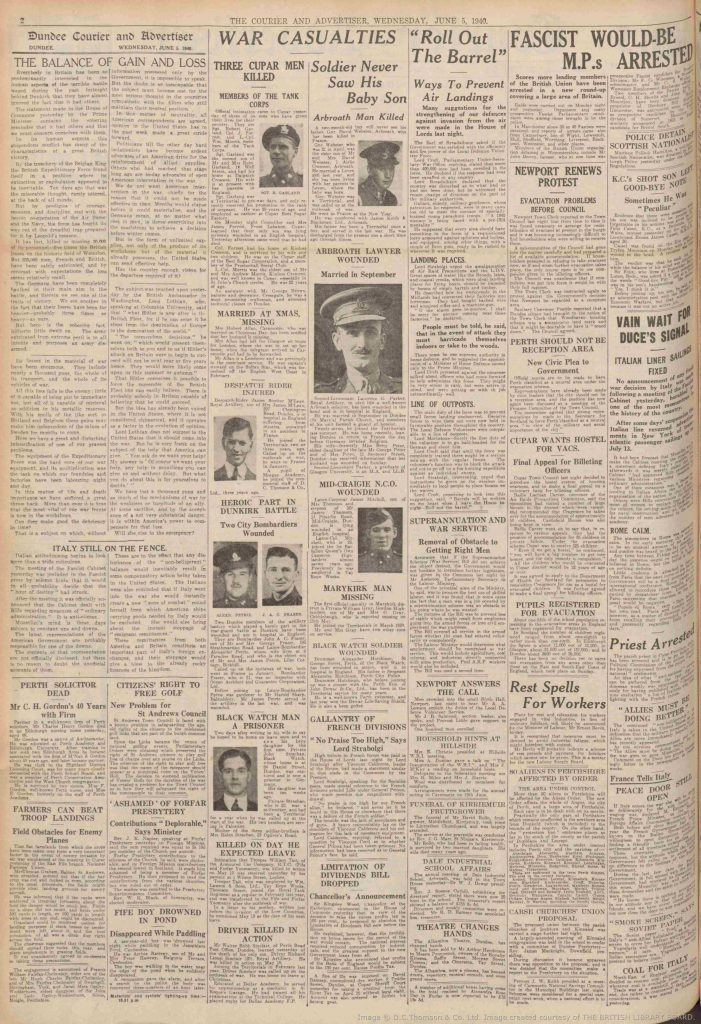The Battle of Dunkirk was one of the most pivotal turning points of World War II – and is the subject of a new film by Christopher Nolan now out in cinemas.
The story of the fighting and ensuing evacuation remains one of the most incredible stories of modern British history.
After being forced to retreat by the Germans from the Netherlands and Belgium, the Allied forces were cut off from counterparts in the south and pushed back towards the northern corner of France.
The British Expeditionary Force (BEF), along with French troops, were eventually encircled around the Port of Dunkirk – the only place left possible for an Allied evacuation.
A total of 338,000 men were trapped and left open to attack on the French coast.
Due to the sloping nature of Dunkirk Beach, no large ships could get near to the spot, and so smaller boats had to be used to transport troops.
Admiral Ramsey drew up Operaton Dynamo, a plan to evacuate as many men as possible from the beach – a plan which would come to be known as the “Miracle of Dunkirk”.
Starting on May 26, 1940, smaller boats began moving soldiers back to larger vessels and off to safety.
The “little ships” of Dunkirk have since passed into legend. Non-military civilian vessels, including fishing boats, the length and breadth of the UK were called up to help bring the soldiers to safety.
Between 800 and 1,200 boats are said to have taken part in the evacuation.
A full-scale German assault was never launched on Dunkirk, despite a series of smaller attacks from fighter and bomber planes. The German Army’s inability to act at Dunkirk is viewed as a major tactical failure of Hitler’s.
Had no evacuation taken place, historians say the Allies may have been forced to surrender to the Germans.
Only several thousand men were expected to be rescued from Dunkirk.
However between May 26 and June 3 1940, 338,000 were saved.
We’ve compiled how the “Dunkirk Spirit” found its way into the pages of The Courier from May 30 until June 7 1940.
Thursday, May 30 1940
The Courier carries a story of an Arbroath soldier who was evacuated from Dunkirk under heavy gunfire, en route to marry his partner
HOME FOR LEAVE AND WEDDING
Angus Captain Tells of Ten-Hour Air Attack
Captain David Chapel, second son of Provost Sir William Chapel and Lady Chapel, Arbroath, who is attached to GHQ in France, is home for a short leave.
Captain Chapel, who is in the Royal Artillery, left Dunkirk at the weekend and arrived home yesterday morning.
Seven hundred men, he said, left Dunkirk at the same time. They were due to sail at eight o’clock in the morning, but the troopship was unable to take off until six at night.
During the ten-hour wait the enemy kept up a continuous air bombardment. It was estimated there was a squadron coming over every quarter of an hour, dropping high explosive and incendiary bombs.
During this time the soldiers sheltered in and under trucks.
At six o’clock they succeeded in getting aboard the troopship.
Captain Chapel’s engagement to Miss Mary Paterson, youngest daughter of the late Mr James Craig Paterson, Mains of Letham, and of Mrs Craig Paterson, Redcraig, Viewfield Road, Arbroath, was announced early this month. The wedding will take place quietly at the bride’s home at the end of the month.
Another headline reads “A Murderous Enemy”
The article says: “The eyes of the British people have been opened slowly to a full realisation of the character of the enemy they are fighting, and they know today that no sacrifice is too great to master the horrible menace it presents.
“Entirely reliable observers on the war front tell us that the men comprising the British Expeditionary Force are animated by a fierce indignation against the enemy they are fighting – a new thing in the psychology of the British soldier….We are facing an entire nation mad with the lusts of dominance and cruelty, and can put no limit to the effort, financial and otherwise, required to vanquish such an upsurge of devilry.”
THE PERIL IN FLANDERS
This article says the retreat to the French coast was one of the “consequences of the Belgian King’s treachery”.
It reads: “The British Expeditionary Force and the French divisions joined with it are intact and are fighting desperately.
“But they are surrounded on three sides by numerically heavier German forces and subject to incessant attack from the air.
“Behind them, it seems, Dunkirk is the only Channel port not controlled by the enemy, and for the purposes of a port it has almost ceased to exist.
“In the limited area still controlled by the British and French great numbers of refugees are massed, and are not less ruthlessly assailed than the enemy.
“Speculation regarding the outcome would be idle guesswork, but nothing can now surprise.”
BEF’s EPIC FIGHT TO REACH COAST
Dunkirk firmly held: Allied units still in Calais
The B.E.F, hard pressed, but with unshaken morale, is fiercely battling its way to the coast.
In the words of a message from the King to the Commander-in-Chief, it is fighting with a gallantry “that has never been surpassed in the annals in the British Army”.
French naval forces firmly hold the fortified area of Dunkirk open for the retreating troops. Here land and naval planes are performing magnificent service.
Strain Tells on Germans
This article states Dunkirk “has been transformed into an entrenched camp, and is firmly held by French marines”.
It adds: “Reasonable hope is expressed that the situation of the northern army, so gravely compromised by the Belgian defection, may yet be partly saved by measures now being taken in the most difficult circumstances and the remarkable valour of the British and French troops concerned.
“What is certain is that German troops are subjected to heavy losses and are showing definite signs of exhaustion.”
Friday, May 31 1940
Under the headline “Bombed and Gunned For Hours” is the tale of a Dundee missionary who volunteered in Dunkirk
Y.M.C.A Worker’s Escape
Mr Arthur Brown, Dundee missionary, whose home is at 1 Glenogill Avenue, has reached Glasgow after a nerve-racking two months during which he was frequently under shell and bomb fire.
Mr Brown had been attached to Y.M.C.A huts and mobile canteens serving our troops in France and Belgium.
He embarked at Dunkirk on a warship after having to wait four hours on the quay. Nazi bombers were swooping down, unloading their bombs, and machine-gunning the quay.
He had just stepped aboard the warship when he was blown through a doorway.
“We had only been half an hour out when the Nazis attacked again,” he said.
“Two bombers swooped over the warship. Our anti-aircraft guns went into action, and British fighters appeared.
“One of the German machines was brought down and the other fled. Though we were followed and attacked, no damage was done.
“But when I was in a London bus a woman who had been talking to a sailor came over and asked if I’d heard that such and such a warship had been sunk. I could assure her heartily that is was not true.”
For the first six weeks Mr Brown was in France. In one village Nazi bombers unloaded a salvo, one of which fell just behind the house where Y.M.C.A men were billeted. This bomb and seven others were found embedded in the ground. None had exploded.
“I have been right up at the front lines in Belgium,” said Mr Brown, “and I can tell you the morale of the British troops is wonderful. And the stories about the air force aren’t exaggerated.”
B.E.F Withdrawal, Many Men Home
Night and day battle raging on French coast.
Three destroyers lost.
The great battle of the withdrawal from northern France is now raging on the coast, back to which the B.E.F and the French were forced to fall yesterday by increased German pressure on both flanks.
Troops not immediately engaged in the fighting have been evacuated – the evacuation is still successfully proceeding – and numbers have already reached Britain.
Ministry of Information said withdrawal had been handled with “great skill and daring”.
“The withdrawal and evacuation have been screened by the R.A.F, who have been constantly engaged with the enemy.”
Many Ships, Few Lost
According to the French Admiralty, the number of Allied sips damaged or sunk by German air attack off Dunkirk is relatively small.
Two other headlines proclaim:
Tireless Fight By the R.A.F
75 NAZI PLANES DOWN AT DUNKIRK
Saturday, June 1 1940
FRENCH RETAKE PART OF ABBEVILLE
THOUSANDS MORE B.E.F MEN REACH HOME
Crowds Cheer From Cliff-Tops And Beaches
French troops, it was announced in Paris last night, have recaptured the western part of Abbeville.
Meanwhile, in face of fierce German opposition, men of the Allied navies were carrying on with their stupendous and successful task of withdrawing the B.E.F and French armies from Dunkirk, still held and now almost ringed by protective flooding.
Thousands more B.E.F men continued to arrive safely in Britain last night.
The article also commends the “superhuman work of the Royal navy”.
FLOODS FOIL GERMANS
The German Army, foiled in its attack on Dunkirk by rising flood waters which Allied engineers have loosed over the Flanders plain, redoubled its efforts yesterday to cut off the French rear-guard fighting its way to the coast.
B.E.F Men Embarked Under Nazi Shell Fire
Many more thousands of B.E.F men were brought home last night.
Hungry, tired, but smiling, they were carried across the Channel by a motley “armada” of vessels of every conceivable type.
As the “fleet” grew in numbers so, too, rose the spirits of the crowds that lined the beaches and cliff tops of the South-East Coast of England to give the gallant army of battle-weary men a rousing welcome home.
Another headline reads: FOG HELPS R.A.F WITHDRAWAL
Monday, June 3 1940
On this day, The Courier featured a story about a Fifer who arrived home from Dunkirk and got straight back into village life.
BACK FROM FLANDERS, HE PLAYS IN TOWN BAND
Private Robert Swan, of Kirkland Road, Methil who went from “fighting every inch of the way” to Dunkirk, two days after arriving home took his place in the Leven British Legion Pipe Band and paraded through the town.
He was quoted saying: “Two days ago in Dunkirk I wasn’t thinking I would be playing with the band at Leven on Saturday.”
It mentions other locals who arrived home safe from Dunkirk: Robert Simpson of Leven and Pte W W Somerville of Methil.
OVER FOUR-FIFTHS OF B.E.F SAVED
OUR NINE DIVISIONS HELD ENEMY ON 80-MILE FRONT
MR EDEN’S REVELATIONS OF BATTLE FOR CHANNEL PORTS
More than four-fifths of the B.E.F has been saved.
Mr Eden, War Minister, announced this last night, broadcasting an account of the magnificent conduct and achievements of the British troops in Flanders.
At one time, he said, the nine divisions of the British force had to hold the enemy on an eighty miles front. Every brigade stood firm.
“The spirit of our fighting men must be our banner and our spur. We need more planes, more tanks, more gun. The people of this country must work as never before.”
“They never once gave way” – Brigadier’s Tribute to B.E.F men
At 5.a.m yesterday a British infantry brigade was embarked from the beach north of Dunkirk.
It has been in the midst of the fighting in Flanders from start to finish, for it was among the troops which led the advance into Belgium, and it fought in the rear-guard from the furthest front reached by the B.E.F to the gates of Dunkirk.
“My men,” said the brigadier on stepping ashore in England, “never once gave way. They beat back every German attack, and every time they retreated it was when ordered and only as far as ordered.”
Station Crowds Cheer B.E.F
Women and children crowded station platforms in outer London yesterday to give a rousing welcome to British and French troops back from the Flanders battlefields as their trains steamed through stations.
113 NAZI PLANES DOWN OR “OUT”
Following Saturday’s record 78 bombers and fighters destroyed or severely damaged between dawn and seven o’clock- British fighters, from reports so far received, destroyed 35 enemy planes, and probably a further six, in the Dunkirk area yesterday.
DUNKIRK DOG-FIGHTS
At Dunkirk huge formations of Nazi bombers, escorted by fighters, attempted to sink the ships, craft of all kinds, which were thick on the sea, but our fighters attacked and drove them off, most of the bombs falling into the sea.
UNARMED, HE WON
A British fighter pilot who found himself out of ammunition as he neared an enemy bomber, and “worried the enemy with such a succession of stunts” that the Nazi pilot made a “fatal error”.
Tuesday, June 4 1940
Under the day’s war casualties is the sad story of a young Dundee soldier who fought at Dunkirk.
Private William M Paterson died from wounds sustained in Dunkirk after being transported to an English hospital. Under the headline “Father Gave Blood In Vain”, this article tells of how the apprentice joiner was drafted into the RAMC one week after his 20th birthday, only to suffer a leg wound in Dunkirk. His father gave blood in a bid to save his son.
Another story tells the tale of a Dundonian father and son, both soldiers, whose paths crossed in northern France
SOLDIER FATHER AND SON MEET IN FRANCE
Linlathen Man’s Perilous Journey
The story of how he met his son two days after he arrived in France was told to a “Courier and Advertiser” reporter yesterday by Pte Alexander S Lindsay, member of a salvage unit, who lives at 28 Alloway Terrace, Linlathen, Dundee.
Pte Lindsay, having reached France, heard that the Black Watch were stationed four miles from Bethune. He went there and asked a staff-sergeant if he had a Pte Alexander Lindsay in the battalion. Men were on parade for pay.
Someone took two paces from the ranks and greet him. “Hullo, dad! What are you doing here?”
Fishers, Yachtsmen, Helped Navy Save B.E.F
Fleet of 887, Six Destroyers, 24 Small Ships Lost
A total of 887 British ships – 222 naval vessels and 665 other British craft – brought off the evacuation of the B.E.F from Dunkirk, it was revealed last night by the Admiralty.
Paying tribute to the services of the “other craft”, which were essential to the success, the communique states they were the means of saving thousands of lives.
Six destroyers were lost as well as 24 minor war vessels.
“This most extensive and difficult combined operation in naval history has been carried out during the past week,” stated the Admiralty communique.
“British, French, and Belgian troops have been brought safely to this country from Belgium and Northern France in numbers which, when the full story can be told, will surprise the world.”
UNDER CONSTANT FIRE
The withdrawal was carried out “in face of intense and almost continuous air attack and increasing artillery and machinegun fire” the report states.
FURIOUS FIGHTING
The evacuation of men of the B.E.F and the French Army from northern France is still going on.
Many men are going direct back to France with their French Navy rescuers.
“The epic of Dunkirk still goes on” declared the French military spokesman.
Another headline reads: PARIS RAIDED; 200 CASUALTIES
Wednesday, June 5, 1940
This edition includes the story of two Dundee soldiers who were wounded in Dunkirk
HEROIC PART IN DUNKIRK BATTLE
Two City Bombardiers Wounded
Two Dundee members of the artillery battery which played a heroic part in the rear-guard battle at Dunkirk have been wounded and are in hospital in England.
They are bombardier John AC Fraser, son of Mr and Mrs George Fraser, 193 Strathmartine Road, and Lance-Bombardier Alexander Petrie, whose wife lives at 6 Paradise Road, and who is the eldest son of Mr and Mrs James Petrie, Lilac Cottage, Birkhill.
Called up on the outbreak of war, both went to France in January. Bombardier Fraser, who is 21, was an inspector with Ocean Accident and Guarantee Corporation Ltd.
Before joining up Lance-Bombardier Petrie was gardener to Mr Harold Sharp, Balruddery. Mr James Petrie served in the artillery in the last war, and was wounded.
LAST TROOPS LEAVE DUNKIRK
PORT MADE USELESS TO THE GERMANS
Rearguards Heroic Resistance: House To-House Fighting
The evacuation of the Allied forces from the Dunkirk area has now been successfully completed, the last troops being withdrawn during the night of 3rd– 4th June.
This was announced in a communique issued from the War Office last night, which added: –
“The outstanding success of this operation, which must rank as one of the most difficult operations of war ever undertaken, as been due to the magnificent fighting qualities of the Allied troops, to their calmness and discipline in the worst of conditions, to the devotion to duty of the Allied Navies, and to the gallantry and exertions of the Royal Air Force.”
NAVY SAVED 335,000 MEN – PREMIER
B.E.F CASUALTIES TOTAL 30,000
The story of the battle of the ports – an immortal story of courage, sacrifice, endurance, and faith – was told by the Premier in the Commons yesterday.
He disclosed that British losses exceeded 30,000 killed, wounded, or missing, but confessed that he feared only a week ago that “the whole root and core and brain of the British Army” was doomed.
The Navy, however, using nearly a thousand ships, had carried 335,000 men – British and French – out of the jaws of death, back to their native land.
NAZIS CLAIM 40,000 PRISONERS
German High Command announcement: “The fortress of Dunkirk has been taken after fierce fighting. Forty thousand prisoners and booty which cannot yet be estimated have fallen into our hands.
“Thus the whole Belgian and French Channel coast up to the mouth of the Somme is now occupied by German troops.”
Thursday, June 7 1940
Though the evacuation was over, the war continued…
HIGHLAND TROOPS PUT UP FIERCE RESISTANCE
Surrounded, They Fought On
Highland regiments of a famous division fiercely resisted the Germans attacking along the Somme front yesterday.
“THOSE DEVILS OF THE R.A.F”
German prisoners Say Their Air Force Failed Them
Germany praises her air force without restraint, but German prisoners taken in the fighting retreat of the B.E.F in Dunkirk have a different story to tell.
